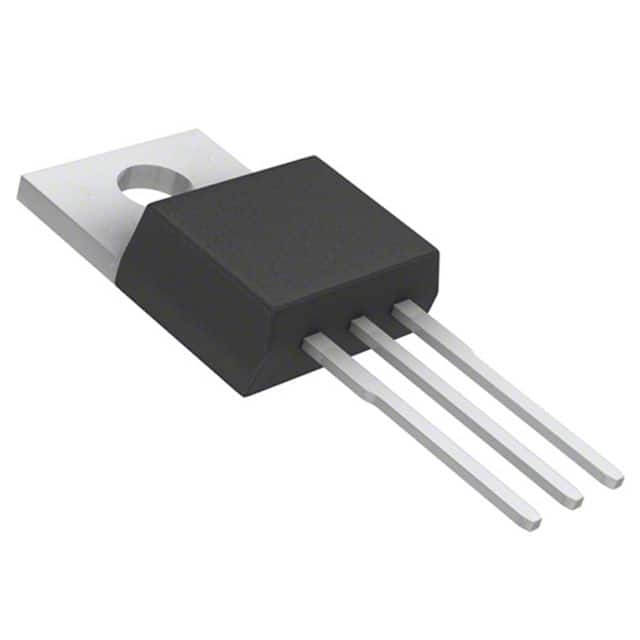BU406 Transistor:
Product Overview
The BU406 transistor is a power NPN bipolar junction transistor (BJT) designed for use in high-voltage applications. It falls under the category of discrete semiconductor devices and is commonly used in power supply circuits, audio amplifiers, and other high-power electronic systems. The transistor exhibits characteristics such as high voltage capability, low saturation voltage, and high current gain. It is typically packaged in a TO-220 plastic package and is available in various quantities to suit different production needs.
Specifications
- Maximum Collector-Emitter Voltage: 200V
- Maximum Collector Current: 12A
- Power Dissipation: 80W
- Transition Frequency: 2MHz
- Package Type: TO-220
- Quantity Options: Available in reels or individual units
Detailed Pin Configuration
The BU406 transistor features a standard TO-220 pin configuration with three leads: collector, base, and emitter. The pinout configuration is as follows: - Pin 1: Emitter - Pin 2: Base - Pin 3: Collector
Functional Features
The transistor's functional features include: - High voltage capability suitable for power applications - Low saturation voltage leading to efficient operation - High current gain for amplification purposes
Advantages and Disadvantages
Advantages
- High voltage capability makes it suitable for power applications
- Low saturation voltage results in efficient energy usage
- High current gain allows for effective signal amplification
Disadvantages
- Relatively large package size compared to smaller SMD alternatives
- Limited frequency response compared to RF transistors
Working Principles
The BU406 operates based on the principles of bipolar junction transistors. When a small current flows into the base terminal, it controls a larger current flow between the collector and emitter terminals. This property allows the transistor to amplify signals and control power flow in electronic circuits.
Detailed Application Field Plans
The BU406 transistor finds extensive application in various fields, including: - Power supply circuits: Used to regulate and control power flow in voltage regulator circuits. - Audio amplifiers: Employed to amplify audio signals in high-power audio systems. - Motor control: Utilized in motor driver circuits to control high-voltage motors.
Detailed and Complete Alternative Models
Some alternative models to the BU406 transistor include: - TIP31C: A similar NPN power transistor with a TO-220 package and comparable voltage and current ratings. - MJ15003: A higher power NPN transistor suitable for demanding power applications.
In conclusion, the BU406 transistor is a versatile component with high voltage capability and is widely used in power electronics and audio amplification applications. Its robust characteristics make it a popular choice for various high-power circuit designs.
[Word Count: 398]
قم بإدراج 10 أسئلة وإجابات شائعة تتعلق بتطبيق BU406 في الحلول التقنية
What is BU406?
- BU406 is a silicon NPN power transistor commonly used in electronic circuits for amplification and switching applications.
What are the typical applications of BU406?
- BU406 is often used in audio amplifiers, power supply circuits, motor control systems, and other high-power electronic applications.
What are the key specifications of BU406?
- The key specifications of BU406 include a collector current of 12A, collector-emitter voltage of 200V, and a maximum power dissipation of 80W.
How do I connect BU406 in a typical amplifier circuit?
- In a typical amplifier circuit, BU406 is connected as a common-emitter configuration with appropriate biasing and coupling components.
What are the important considerations for heat dissipation when using BU406?
- Proper heat sinking and thermal management are crucial when using BU406 to ensure that it operates within its specified temperature limits.
Can BU406 be used in high-frequency applications?
- While BU406 is not specifically designed for high-frequency applications, it can still be used in certain low to moderate frequency circuits with proper design considerations.
What are the potential failure modes of BU406?
- Common failure modes of BU406 include thermal runaway, overvoltage stress, and excessive current leading to breakdown.
How do I protect BU406 from overcurrent and overvoltage conditions?
- Overcurrent and overvoltage protection can be implemented using external circuitry such as fuses, current-limiting resistors, and transient voltage suppressors.
What are some alternative transistors to BU406?
- Alternative transistors to BU406 include TIP31, TIP32, 2N3055, and MJ15003, depending on the specific application requirements.
Where can I find detailed application notes and reference designs for using BU406?
- Detailed application notes and reference designs for using BU406 can be found in the manufacturer's datasheet, application notes, and online technical resources.


